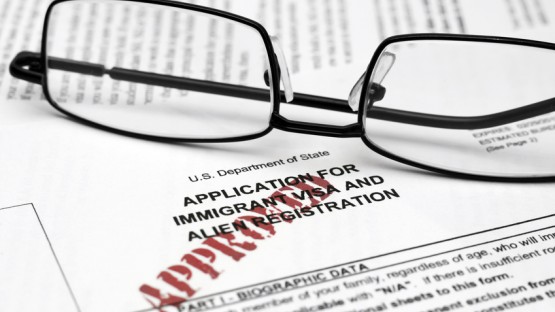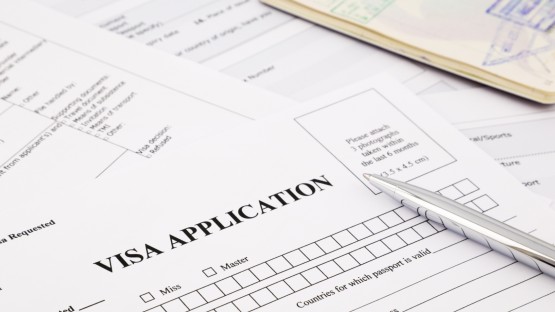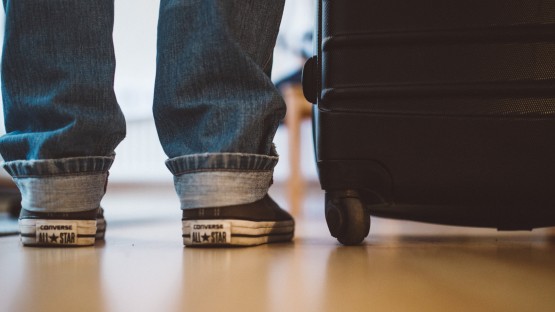Admin Issues When Travelling with Pets

If four-legged Daisy is embarking on the new adventure abroad with you and your family, it is important to find out her travelling requirements to the new country as soon as possible. In particular, you will have to research pet importation requirements in the host country, and your airline’s travelling policy for pets. I recommend you list these requirements in a notebook, so that you may take additional notes as you learn new information (you will), and can keep track of what is left to do.
Pet Importation Requirements
Always check the laws and regulations for importing and exporting domestic pets from your home country to your new country. This information is usually published on the website of the government agency dealing with animal and plant control. Even if you have travelled internationally with Daisy before, it is important to check travel requirements for pets every time you travel with her. Sometimes – often enough — importation requirements change and you do not want to be caught by surprise without the necessary documentation at the airport ticket counter. Importantly, not only do requirements for pet importation vary widely from country to country, they also vary widely depending on the type of pet you are importing, and the country where the pet is coming from. That is to say, importing your dog from Colombia to Mexico implies different requirements than if you were bringing him from the United States.
Generally speaking, your dog or cat will require having her veterinary certificate showing all vaccinations are up-to-date, especially rabies, and a deworming done within the past six months. Some countries, like the United States, also require a wellness-certificate issued by a certified veterinarian four to seven days before travel stating that the animal is in good health. Please note that the maximum number of days for the wellness-certificate may vary from the stated window, as may that for deworming.
Many other countries, including Japan, New Zealand and the United Kingdom, require the quarantine of cats and dogs at the pet owner’s expense. For nearly all, you will have to fill out and submit a pet importation form to the relevant authority.
Do also check with your veterinarian and the relevant domestic government agency for any additional exportation or re-importation requirements. If you travel back home with Daisy on the holidays, you want to make sure you have all the paperwork you need for re-entry. For example, if you are travelling from the European Union, make sure your veterinarian issues you an EU Pet Passport and that your domestic pet is micro-chipped for re-entry.
Airline Pet Traveling Policy
Another important task will be looking into the pet travelling policies for your airline, as they differ substantially. Airline policy for pet travel falls into two broad categories: in-cabin travel, or under-cabin (cargo) travel.
In-cabin travel requirements vary widely from airline to airline: some bar it altogether, some allow a maximum joint pet and carrier weight ranging from 8-11kg (17.5 -25 lbs.). Most airlines also have a size requirement for pet carriers (with specific length, height and width dimensions that are not standard across all airlines). Whatever the specific weight and size specifications for the pet carrier established by your airline, the pet must be able to stand and turn around inside the carrier. At the airport, airline personnel can ask to verify pet mobility inside of the carrier at their discretion.
The most important thing to note for under-cabin pet travel: several major airline carriers have black-out dates for pet travel to or from certain destinations. Black-out dates – which can last a whole season — are determined based on average weather (extreme hot or extreme cold). Standing in extreme weather to be loaded or unloaded from the cargo section of the plane has cost pet lives; and so with good reason airlines prefer to avoid this liability by barring pet travel altogether when extreme weather is expected. Ask the airline specifically about black-out dates for under-cabin pet travel (they will sometimes fail to tell you unless you ask). Regarding fees, practically all airlines have a surcharge for travelling with a pet, whether it is in-cabin or under-cabin. The surcharge typically ranges from 75-200 USD, depending on your city of departure and your destination. This is usually paid at the airline ticket counter.
For under-cabin travel of your pet, you will need a hard-cased pet carrier suited specifically for air travel. These can be found in most large pet accessory shops – they are often marked with an airplane icon. One of the main differences between these and standard pet carriers is that all latching mechanisms are external and cannot be reached by the pet. Make sure to grab a spill-proof water container as well. Finally, note that if you are travelling with two small- or medium-sized pets, they might be able to travel together in the same pet carrier, a much less stressful experience for them. Consult your airline.















